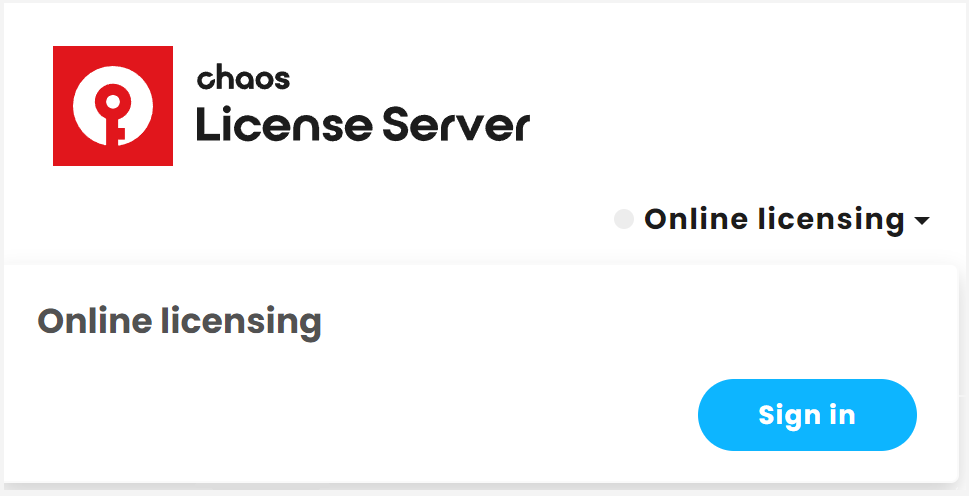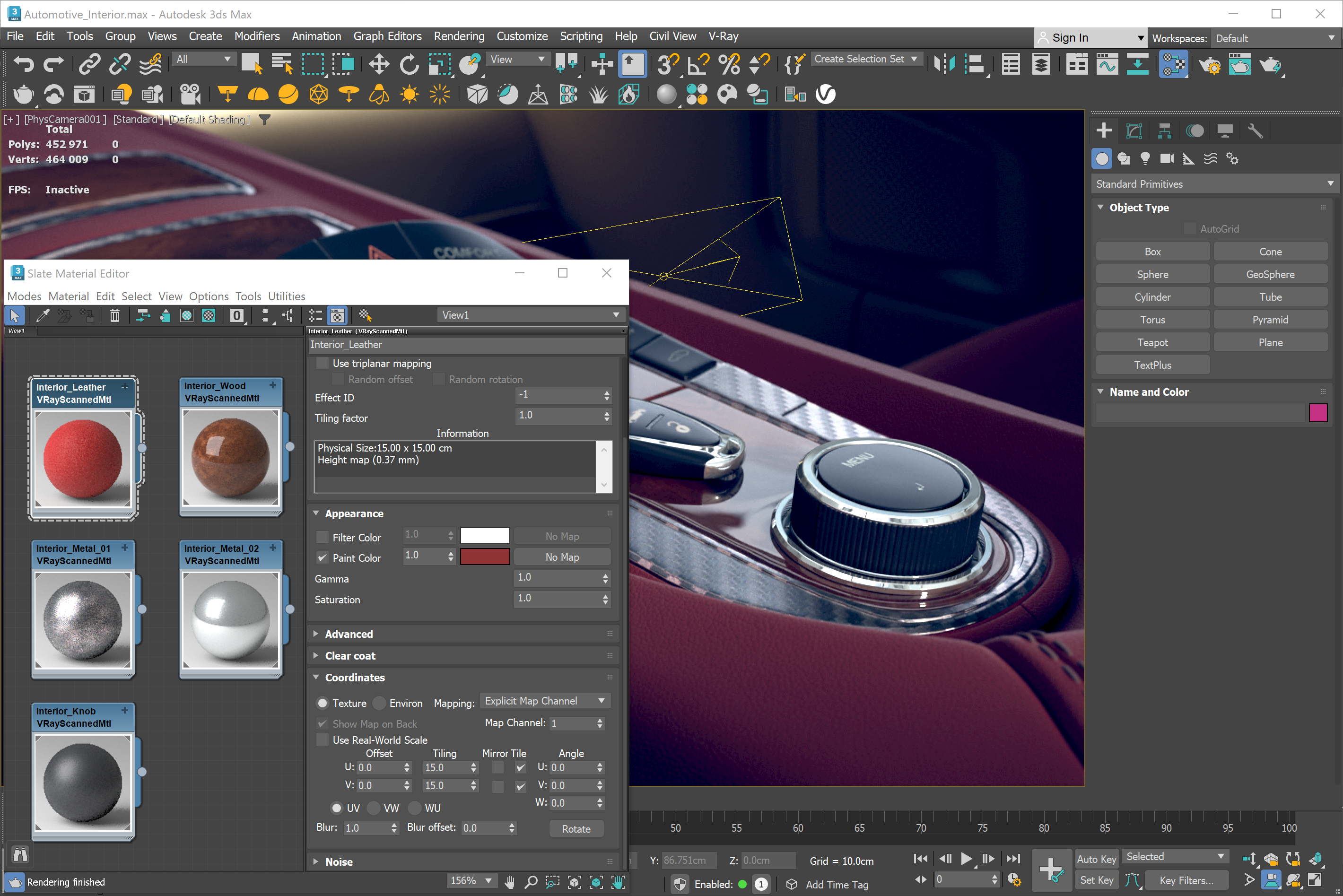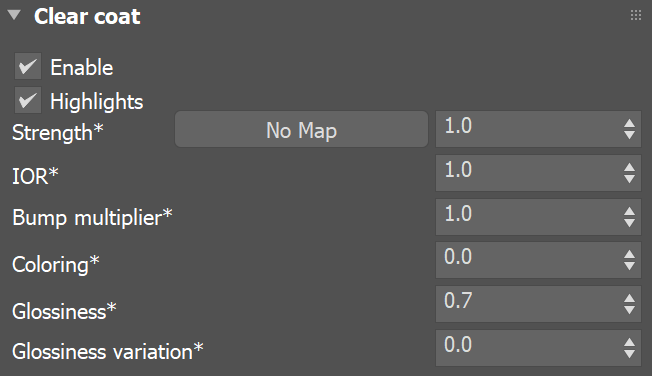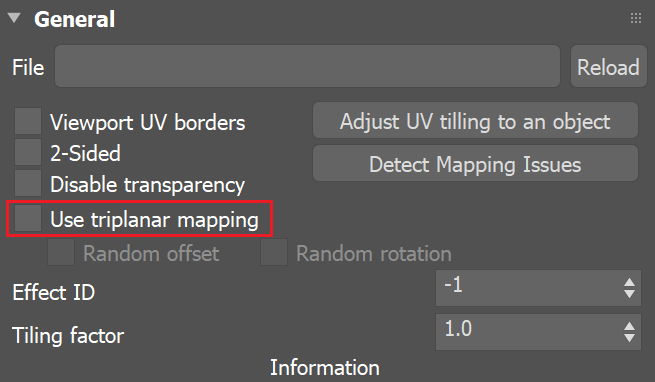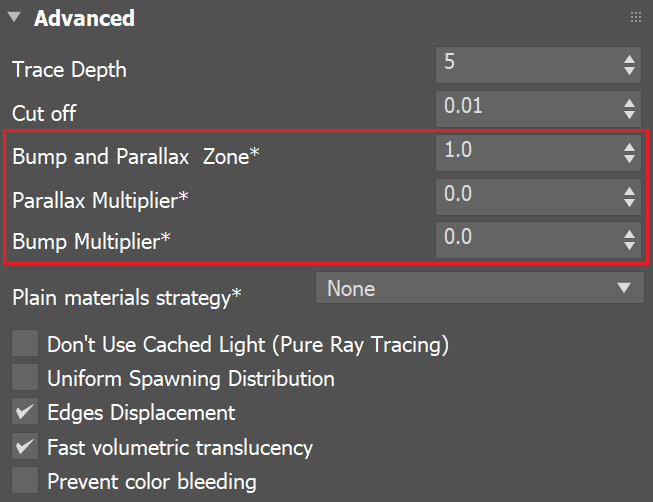Page History
| HideElements | ||
|---|---|---|
|
Online licensing support – Adjust seats without the need of a USB dongle.
Adjust UV tiling –
adjustAdjust the scale of the texture tiling
by interactively clicking onin the viewport to fit it to the object's mesh
Image to illustrate what this is.
scale.
Filter
Image to illustrate what this is.
Control the color – tint Tint the color of the original scanned surface to suit your scene's needs by adjusting a the Filter color multiplier on the scanned material node.
Easily read information on the scanned object – the scanned material hosts information fields that display information from the original scanned object such as:
- The size of the physical sample used to scan the material
- etc
- etc
Image to illustrate what this is.
Image to illustrate what this is.
Set the Subdivision level – control quality and speed of reflections by adjusting subdivisions of reflection rays as well as the Trace Depth to set the number of reflection bounces needed
Paint on top of color – Change the color of the material without loosing the underline texture or affecting the reflection color.
Paint on top with texture – Not just color but a combination of custom textures can be used to substitute the original material texture.
Index of Refraction – Scanned materials with a clear coat layer, like car paint, also have
Index of Refraction – most scanned materials will have a clear coat layer withan accurate IOR value that is obtained from the scanning process for the surface
Image to illustrate what this is.
Image to illustrate what this is.
Adjustable surface Clear Coat bump – the The VRscan process stores a built-in bump map for the clear coat Clear Coat layer of the scanned material that can be controlled for the needs of the scene.
Volumetric Translucency support – Scans materials can capture translucency in volumetric materials with varying thickness.
GPU Support –
Uniform reflection distribution – choose between importance sampling to put more rays where you need them, and sampling the scene hemisphere uniformly, depending on the scene lighting and the materials needs in the scene
Image to illustrate what this is.
Scans are compatible with V-Ray GPU for increased performance and flexibility.
Render Elements – Scans support separation into several render elements: clear coat reflections, direct light, indirect lighting by spawned rays, opacity and received caustics stored.
Triplanar Mapping – Scans materials can be applied by proprietary triplanar mapping, which removes the need for explicit UV mapping.
Bump and Parallax Control – Adjustable surface bump and displacement amount.
V-Ray Version Required Info – Display of the required V-Ray version for the material to be rendered correctly.

